INTRODUCTION
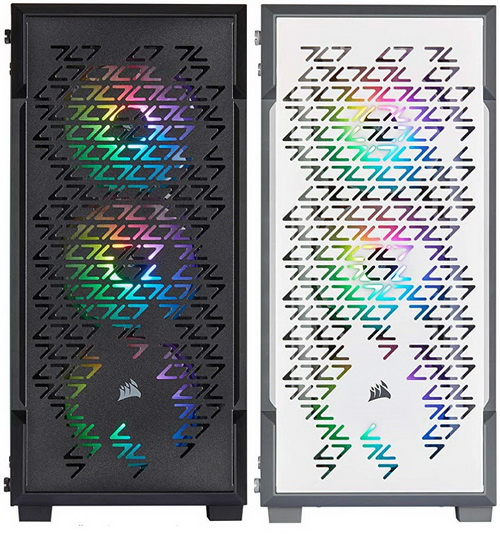
Although there's no shortage of PC cases in the market with numerous features, different designs, tempered glass side panels and RGB lighting there's one thing manufacturers many times seem to neglect, stock airflow levels. Anyone can of course add more fans but the reason I added the word stock is because some people either don't know or are just not willing to spend more money (considerably more than what manufacturers charge for bundled fans) to equip a tower with extra fans. And then there's the design factor and as you've seen in many of our reviews some models don't have sufficient front air intakes while others don't even have top fan/radiator mounting areas. The iCUE 220T RGB Airflow Mid-Tower Gaming Case by CORSAIR released earlier today is not only what today's review is all about but it also seems to focus on all of the above.
Founded in 1994, CORSAIR has grown from pioneering the high-performance DRAM market into one of the world’s leading providers of high-performance PC peripherals and components. CORSAIR offers a complete range of products to equip gamers, enthusiasts and e-sports athletes, including mechanical keyboards, precision gaming mice, wireless headsets, high-performance components that gamers use to build gaming PCs, and the CORSAIR ONE fully-integrated gaming PC. With a company-wide commitment to quality, innovative design, advanced features and high performance, CORSAIR products have won thousands of media and industry awards, earning their place in gamers’ hands and PCs following years of development and engineering by a team dedicated to building great products they themselves would want to use.
As mentioned already the main selling points of the brand new iCUE 220T RGB Airflow Mid-Tower (available in black and white and compatible with micro-ATX, mini-ITX and ATX sized mainboards) are its airflow levels largely thanks to its three SP120 RGB PRO fans (8 addressable LEDs each - iCUE software control) located at the front behind a largely perforated steel fascia, its side tempered glass panel and its dual-chamber internal layout. Of course since the iCUE 220T RGB Airflow lacks any left side drive cages it also has a good amount of interior space for anything you may want to equip it with including room for up to six 120mm fans (or four 140mm ones and a single 120mm one) and/or three 240/280/360mm radiators (roof/floor/front), two 2.5" and two 2.5"/3.5" drives, 300mm long graphics cards, 160mm tall CPU coolers and 180mm long power supply units. Other features include front/top/bottom removable air-filters, removable 2.5"/3.5" drive cage and an iCUE lighting node CORE fan hub for up to six CORSAIR RGB fans (6 different lighting modes). For a compact mid-tower this certainly sounds interesting right?
SPECIFICATIONS AND FEATURES

PACKAGING AND CONTENTS
CORSAIR packs the iCUE 220T RGB Airflow (the Graphite name was dropped shortly after the first samples were dispatched) inside a plain cardboard box that has a product drawing at the front right over the product name and beneath their logo.
The specifications table, included color and two product drawings showcasing its size are printed on both sides of the box.
A drawing showcasing all the parts of the iCUE 220T RGB Airflow is located at the rear of the box right over a list of those parts in 8 languages.
As usual the case is wrapped inside a plastic bag and placed between two thick foam spacers.
The bundle of the iCUE 220T RGB Airflow includes 12 cable ties, 6 small plastic bags with screws and spacers and the user manual.
THE ICUE 220T RGB AIRFLOW EXTERIOR
Measuring 450mm in height, 395mm in depth and 210mm in width the iCUE 220T RGB Airflow is far from the largest mid-tower to ever reach our lab.
The left side panel is entirely made out of tempered glass (just like with most recent Mid-Tower models).
Using a perforated fascia made out of steel was a good surprise not only because of the increased airflow levels but also because of quality.
You can remove the fascia just by pulling it outwards as seen above.
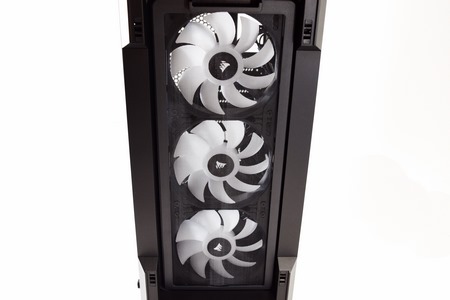
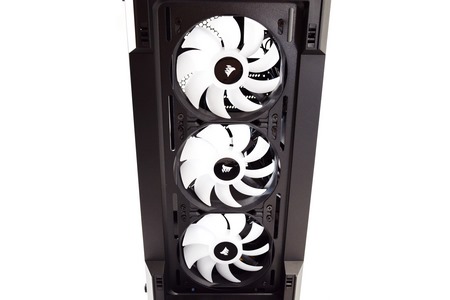
Once you remove the steel fascia you will find a removable air filter and the three SP120 RGB PRO fans past that.
The I/O is located just over the fascia and it includes the on/off power button, two USB 3.0 ports, headphones/microphone port and the reset button.
At the top we find a large magnetic air-filter and beneath it enough room for up to 2x120/140mm fans or an 240/280mm radiator.
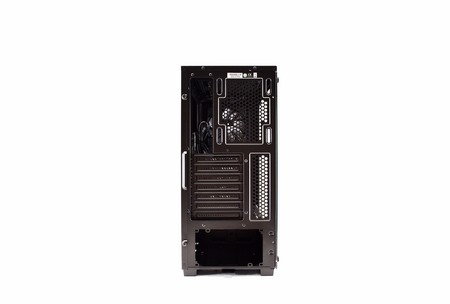
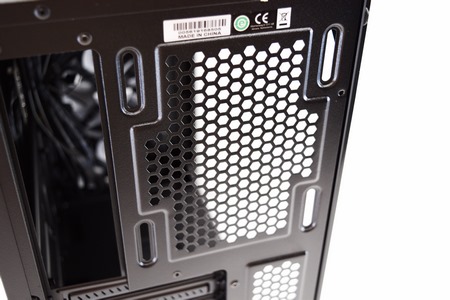
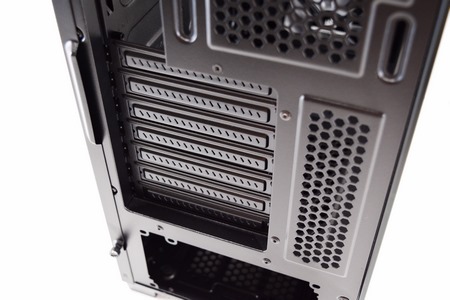
Moving at the rear of the case we find an 120mm fan mount (unfortunately a fan is not included), 7 PCI expansion slots and the PSU area.
A large slide-in/out air-filter is also located at the base of the new iCUE 220T RGB Airflow.
THE ICUE 220T RGB AIRFLOW INTERIOR
Even though the iCUE 220T RGB Airflow is compact mid-tower it has a good amount of interior space.
The three 120mm SP120 RGB PRO take almost all of the front section and can be paired with a 240/360mm radiator (you will need to remove the bottom drive cage to install an 360mm radiator however).
CORSAIR has placed an PSU shroud in the new iCUE 220T RGB Airflow that has 3 cable management holes, one rubber grommet, opening at the front (for a radiator) and a perforated section at the rear just over the PSU area.
As mentioned in the introduction page the iCUE 220T RGB Airflow is compatible with micro-ATX, mini-ITX and ATX sized mainboards (the mainboard tray has 3 rubber grommets on it and 4 cable management holes).
All 7 PCI expansion slots are held in place with regular screws.
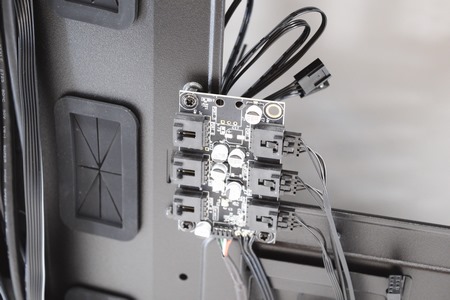
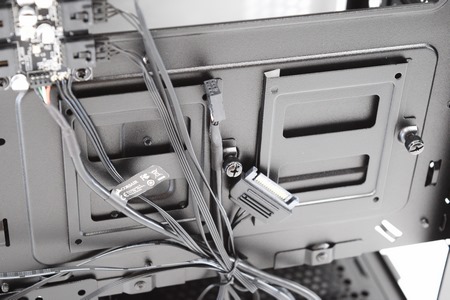
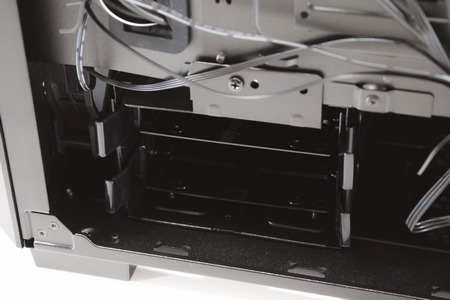
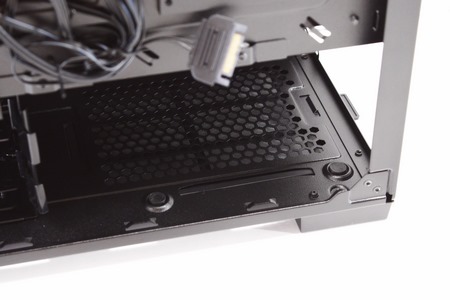 Turning the case around we see the iCUE lighting node CORE hub, two 2.5" drive trays (just pull them upwards to detach), drive cage with two 2.5"/3.5" trays and the PSU area.
Turning the case around we see the iCUE lighting node CORE hub, two 2.5" drive trays (just pull them upwards to detach), drive cage with two 2.5"/3.5" trays and the PSU area.
The 2.5" trays are made out of steel while the 2.5"/3.5" are made out of plastic.
BUILDING THE SYSTEM
As always, the purpose of this section is not to build a functional system but rather to showcase what you can expect from the case at hand in terms of interior space.
Unfortunately, the PSU area is not very spacious so do keep in mind that you can always remove the drive cage.
This way you have plenty of room for cables and even the longest PSUs in the market.
Still PSU's up to 1KW should also fit, you may just need more time for cable management.
Even by installing an ATX sized mainboard all three rubber grommets are usable.
With enough room for 160mm tall CPU air coolers you should be able to use most models in the market today.
You don't need extra "work" to mount an 240mm radiator at the front of the iCUE 220T RGB Airflow as you can see from the above picture (to mount an 360mm one however you will need to remove the bottom drive cage).
It turns out that mounting an 280mm radiator at the top is not the easiest thing due to clearance issues so we suggest going for an 240mm instead (we only have one 240mm radiator here so we're showcasing on both mounting areas).
Unfortunately, if you decide to use a radiator at the front you will not be able to mount a very long graphics card (260-270mm tops).
NOISE LEVEL TEST

After giving it much thought we decided on performing noise tests with each PC Case we receive by placing our ExTech HD600 vertically on top of each case to measure the noise levels emanating from the pre-installed fans at both 50% and 100% with the help of a fan controller (if the case doesn't have one we use our own).
CONCLUSION
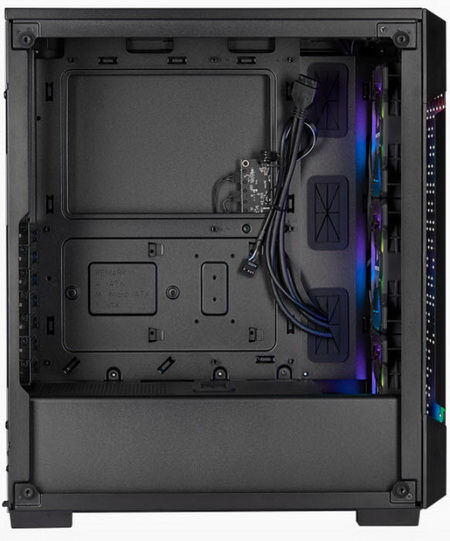
The brand new iCUE 220T RGB Airflow has many things going for it, most noticeably its three SP120 RGB PRO fans (controlled via their iCUE software), the steel perforated fascia which doesn’t just look great but allows plenty of air to reach the interior of the case and of course its tempered glass side panel. However, although the three pre-installed SP120 RGB PRO fans indeed give it impressive airflow levels (for a stock model) they also produce quite a bit of noise thus putting the iCUE 220T RGB Airflow in 14th place out of the 92 towers we’ve tested to date. Now we don’t expect this to be a serious issue for most consumers since on one hand most graphics cards are far noisier and on the other you can always set the fans at lower speeds via the iCUE software but as always, we are required to put everything on the table. That being said the lack of a rear fan is somewhat strange (would not only further increase airflow but the case would also look better) so we’d really like to see an SP120 RGB PRO used there as well. As for interior space since the iCUE 220T RGB Airflow is a compact mid-tower it may not have as much as some other models but still being able to fill it up with up to 6 fans and/or 2 radiators, 4 drives, 160mm tall CPU coolers, 300mm long graphics cards and 180mm long PSU’s should prove to be more than enough, at least for most consumers.
CORSAIR launched the iCUE 220T RGB Airflow earlier today for a price set at USD91.71 inside the USA (Amazon.com) and at 95Euros in the EU (Amazon.uk). Of course, considering that the three SP120 PRO RGB fans with the iCUE lighting node CORE hub alone cost roughly USD50/50Euros the iCUE 220T RGB Airflow Mid-Tower certainly carries a very balanced price tag and that along with its airflow levels, build quality, looks and interior space are more than enough to secure our Golden Award.

PROS
- Overall Build Quality
- Looks (SP120 PRO RGB Fans / Steel Fascia / Tempered Glass Panel)
- Airflow Levels
- Sufficient Interior Space (300mm GPUs/160mm CPU Coolers/180mm PSU’s)
- Room for Up To 6 Fans (120/140mm) Or 2 Radiators (240/360mm)
- Dual Chamber Design
- Top/Front Magnetic Air Filters
- iCUE Lighting Node CORE Hub
- Available In Black & White
- Price (For Some)
CONS
- No Rear Fan
- Fan Noise
- Interior Space (Compared to Other Mid Towers)

 O-Sense
O-Sense

.jpg)



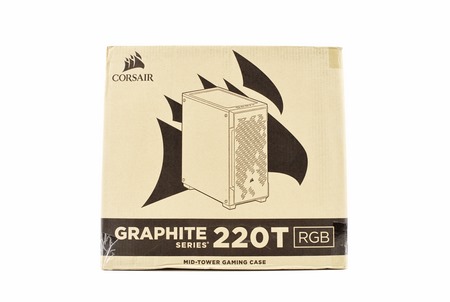
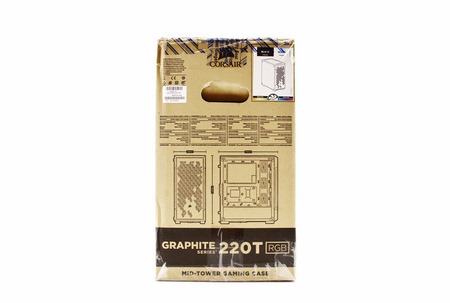
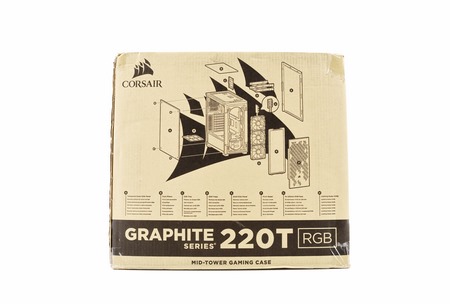
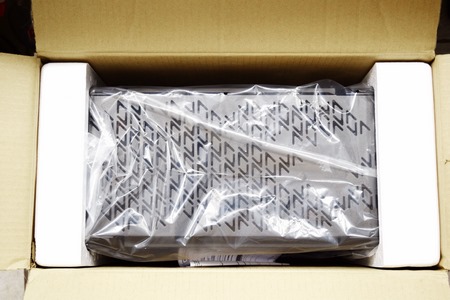
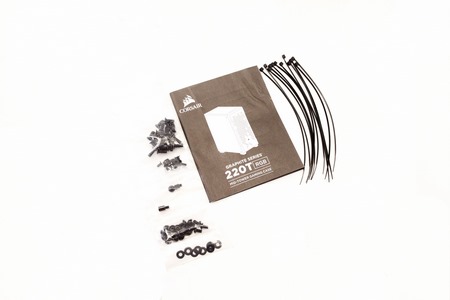
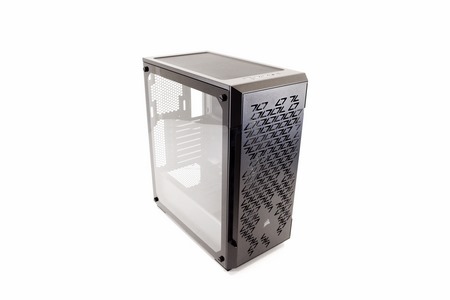
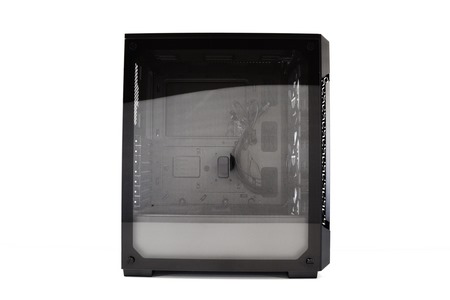
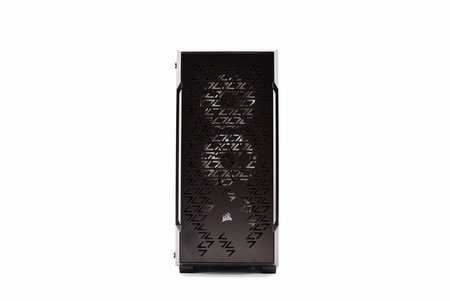
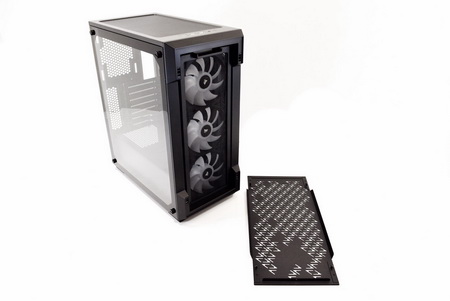
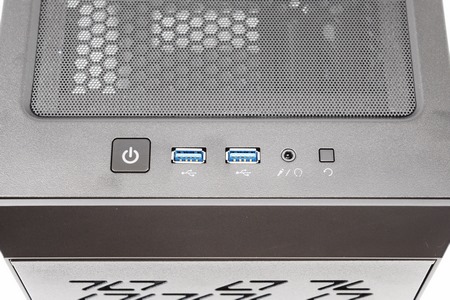
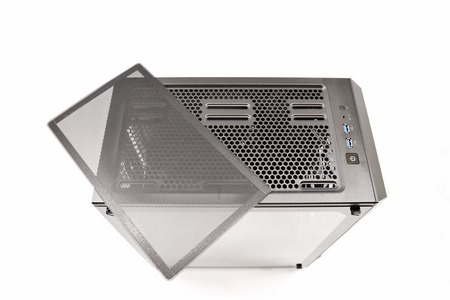
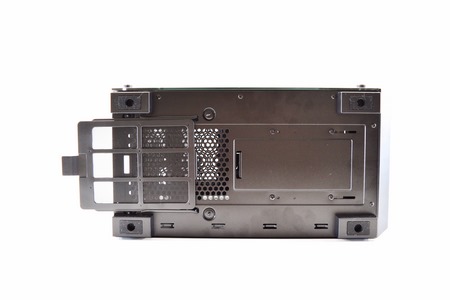
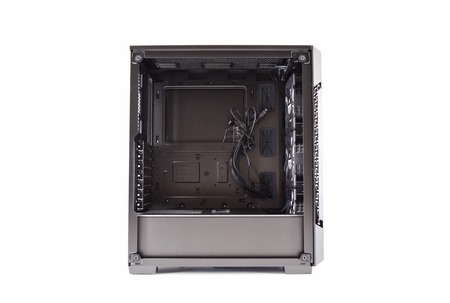
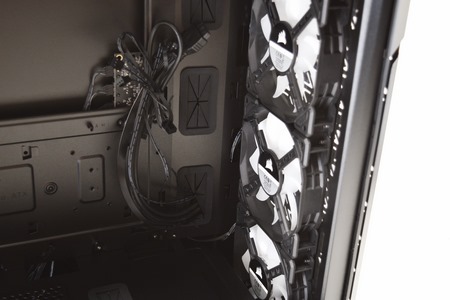
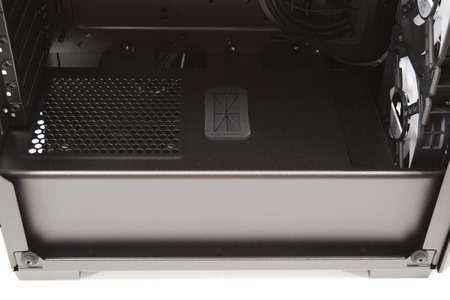
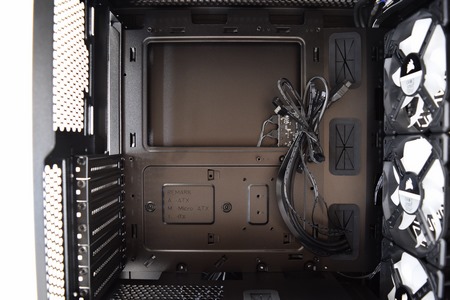
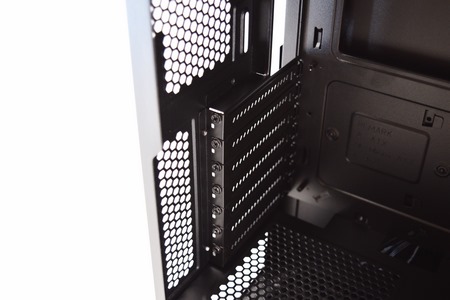
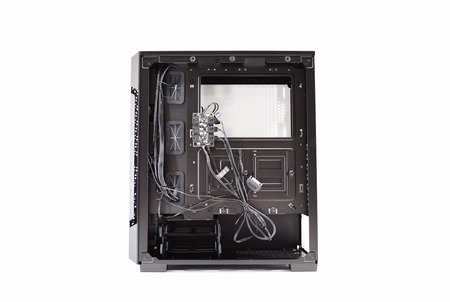
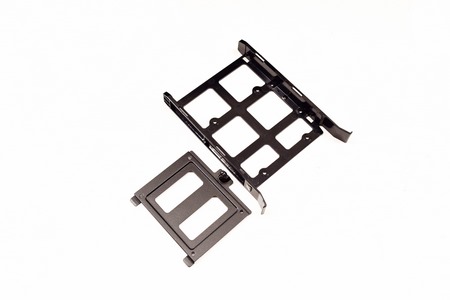
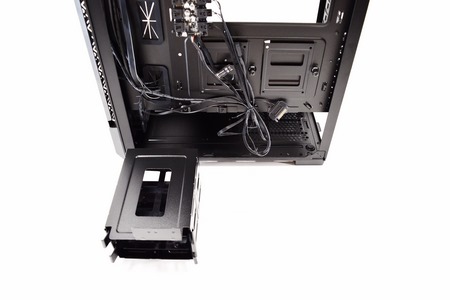
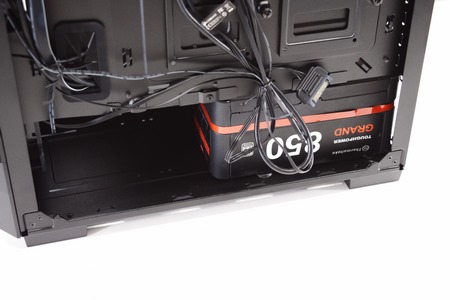
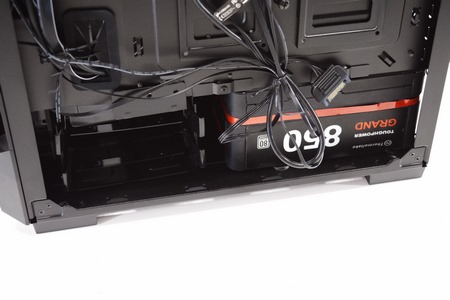
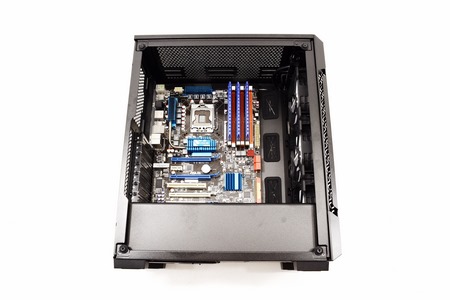
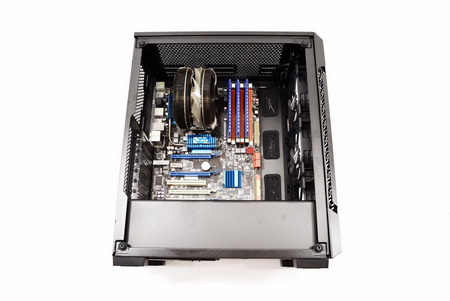
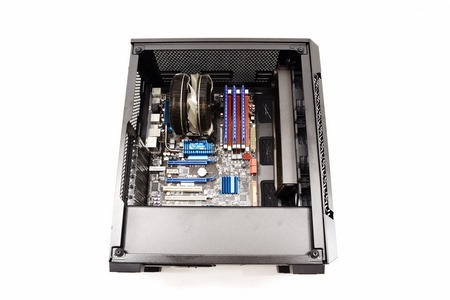
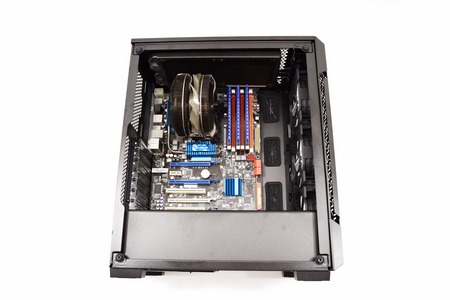
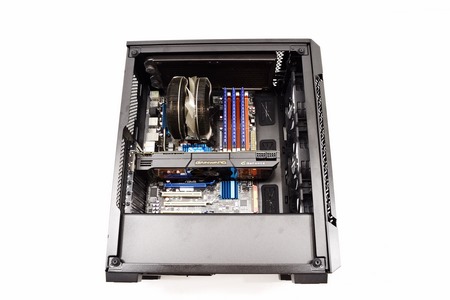


.png)

